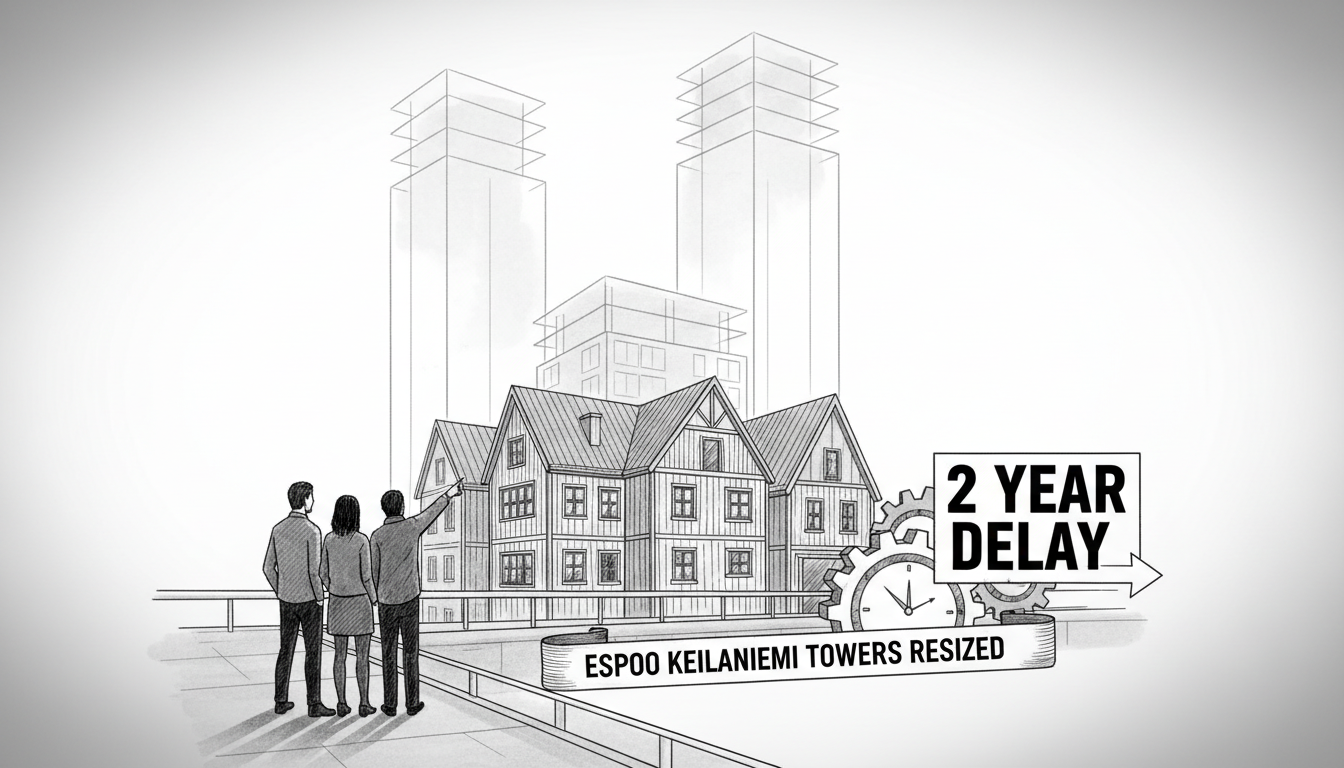Construction company SRV wants to dramatically scale back ambitious tower projects planned for Espoo's Keilaniemi district. The developer seeks to transform proposed skyscrapers into conventional apartment buildings and delay construction by two years.
SRV argues the originally planned towers are too large and cannot accommodate sufficiently diverse apartment types. The company states current market conditions and Keilaniemi's development have changed significantly since the towers were first conceived.
Espoo's Economic and Competitiveness Committee partially approved the zoning changes with a 6-3 vote. The decision allows planning modifications but prevents alterations to land purchase agreement terms that would disadvantage the city.
The two landmark residential towers, planned for years, were supposed to reach 32 and 36 stories. They would have risen between the Kehä I tunnel and the sea, creating a dramatic new waterfront skyline. Under new proposals, building heights would decrease while the total number of apartments would remain unchanged.
SRV also requests extended payment schedules for two plots it purchased with partners from the city. For one plot, 60% of the purchase price has been paid, with the remaining 40% due at the end of 2025. For the second plot, only 20% has been paid, with a 40% installment due in late November.
The committee agreed to a six-month payment extension with 5% annual interest rather than the two-year delay SRV sought. Construction would now begin on the first plot by November 2027 and on the second by 2028 if new timelines are approved.
Opposition came from Christian Democrat Toni Haakila and Greens members Anu Kantola and Risto Nevanlinna. Nevanlinna argued the decision-making process became exceptionally confusing and suggested postponing the vote until officials could provide better information.
This development reflects broader challenges in Finland's urban construction sector. High-rise projects face increasing scrutiny over feasibility, market demand, and integration with existing urban landscapes. The scaling back of Keilaniemi's towers signals a more cautious approach to landmark developments in the Helsinki metropolitan area.
Espoo's urban development has accelerated in recent years, with Keilaniemi emerging as a key growth area near the border with Helsinki. The district already hosts major corporate headquarters and Aalto University, making residential development a natural next step. However, balancing ambitious architecture with practical housing needs presents ongoing challenges for developers and city planners alike.
The decision highlights how even carefully planned urban projects must adapt to changing economic realities. As construction costs rise and housing markets shift, developers increasingly prioritize flexible, practical solutions over architectural statements. This case may influence how other Finnish cities approach major development projects in coming years.

